5 Reasons to use timber in Architectural Design
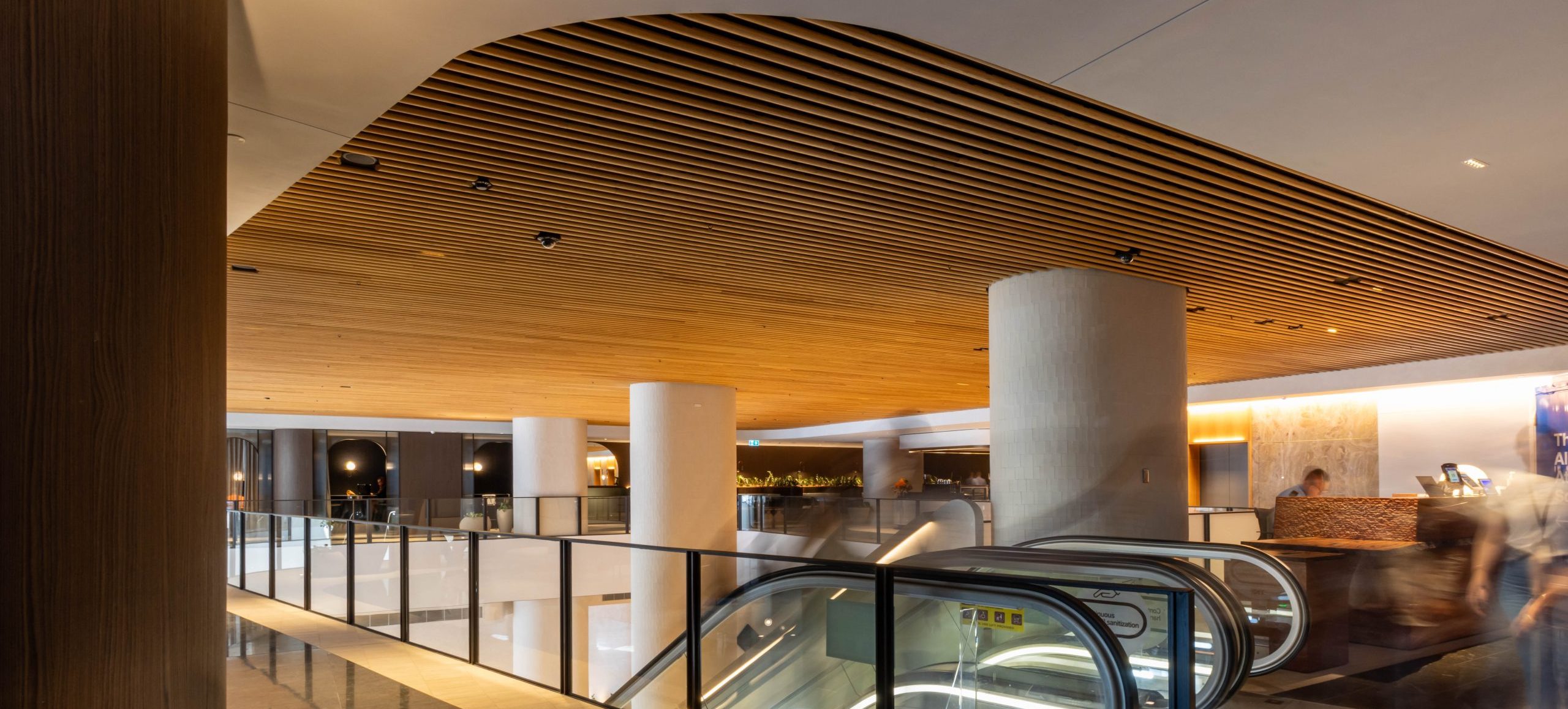
Incorporating natural timber into architectural design is more than just a trend; it’s a timeless choice that brings warmth, elegance, and sustainability to any space. Whether you’re renovating a cozy home or designing a cutting-edge commercial building, the rich textures and natural beauty of timber can transform your project.
In this blog post, we’ll explore five compelling reasons to embrace natural timber in architectural design, from its environmental benefits to its versatility and aesthetic appeal. Discover how this natural, remarkable material can help your architectural vision and create spaces that are both inviting and enduring.
1. Carbon sequestration and sustainability
Timber isn’t just a building material; it’s a solution to combating climate change. By opting for timber, you’re choosing a material that actively stores vast amounts of carbon, helping to reduce carbon emissions and combat deforestation.
What’s more, sustainable forest management practices ensure that for every tree harvested, several more are planted, contributing to the growth and improvement of our planet. Trees actively absorb carbon dioxide from the atmosphere and efficiently store the carbon, constituting approximately half of a tree’s dry weight.
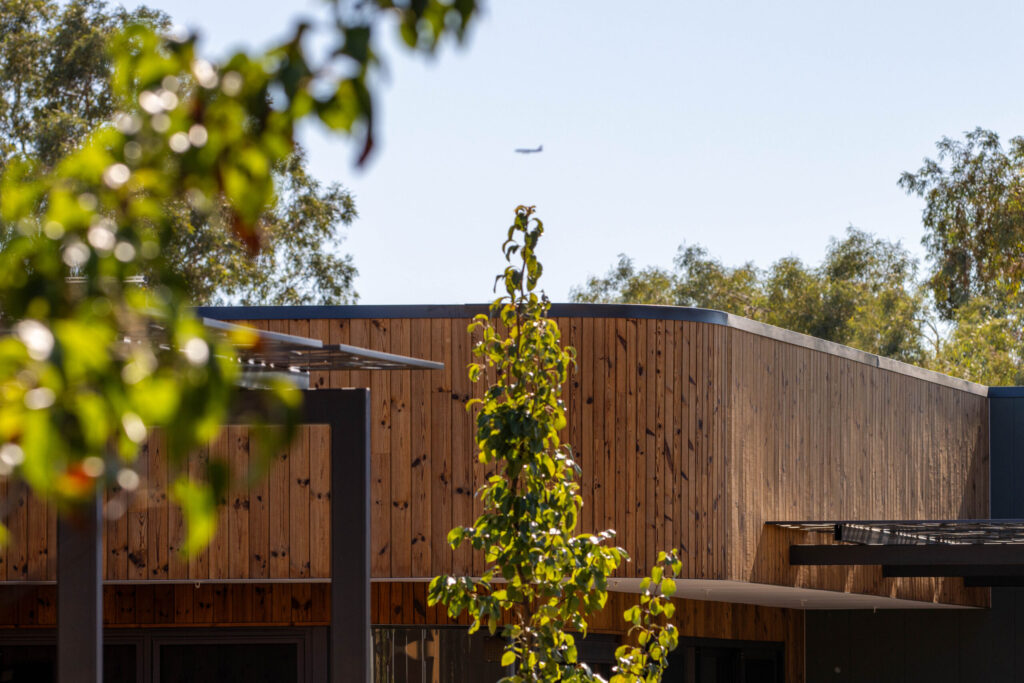
As a forest grows, it actively removes carbon dioxide from the atmosphere and stores it in the form of wood. An undisturbed forest will continue to store carbon for many hundreds of years, although the rate of storage will decline as the forest ages. However, forest researchers have scrutinised details of monoculture plantations of fast-growing species, arguing that efforts to restore natural ecosystems would be more beneficial. We at Mortlock Timber understand that while natural forests would be contributing more than ‘reforestation’, experts have stated that monoculture timber plantations have their place.
While timber buildings and specified products offset carbon, concrete buildings can also absorb CO2 through carbonation. This happens when CO2 reacts with calcium hydroxide in concrete, forming calcium carbonate. While this process is slow, it helps offset some of the CO2 emitted during cement production. However, its impact can be limited compared to overall emissions.
Worldwide, there are two internationally recognised systems for the certification of sustainable forest management and its supply chain – the Programme for the Endorsement of Forest Certification (PEFC) and the Forest Stewardship Council (FSC).
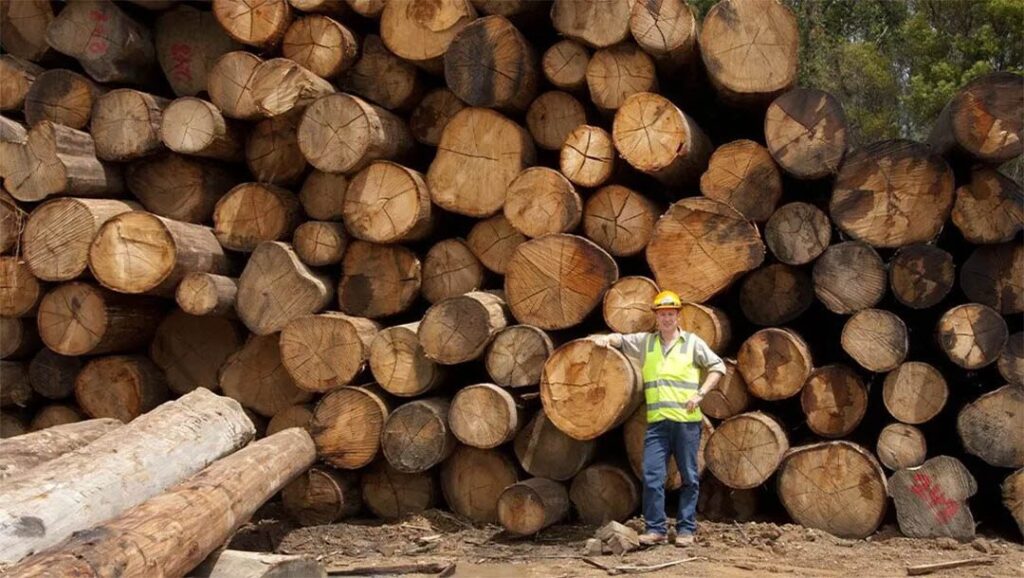
In Australia, Responsible Wood manages the Australian Standard for Sustainable Forest Management, which is internationally endorsed and mutually recognised by PEFC, the world’s largest forest management certification scheme. Mortlock Timber is now listed as a certificate holder.
In Australia, both PEFC and FSC claims are made on a wide range of products that use wood as a raw material: timber for the construction industry, energy and DIY sectors as well as paper and packaging products.
Despite deforestation concerns, wood remains a highly sustainable material when it is sourced and managed responsibly. This is where the discussion will continue as suppliers like Mortlock Timber who hold PEFC Chain of Custody certification undergo stringent audits to ensure the promise of sourcing sustainable timber is upheld.
Specifying PEFC or FSC certified timber can simultaneously support the wellbeing of occupants while protecting of the world’s forests and those that depend upon them.

2. Natural and pre-finished durability
While it is beautiful to look at and has amazing texture to the touch, natural timber given the right processes can achieve more than anticipated.
Achieving Group 1 Rating
Achieving a high level of fire resistance for a design is often key during the planning and specifying of a project. Fireshield Intumescent Timber Coating provides non-combustible, clear protection for interior timber surfaces. Applied as the initial coating of a two-coat system, this thin film technology expands when exposed to heat, offering fire resistance for commercial projects. We at Mortlock Timber are a registered applicator for Fireshield, read more about achieving Group 1 Rating with natural timber here.
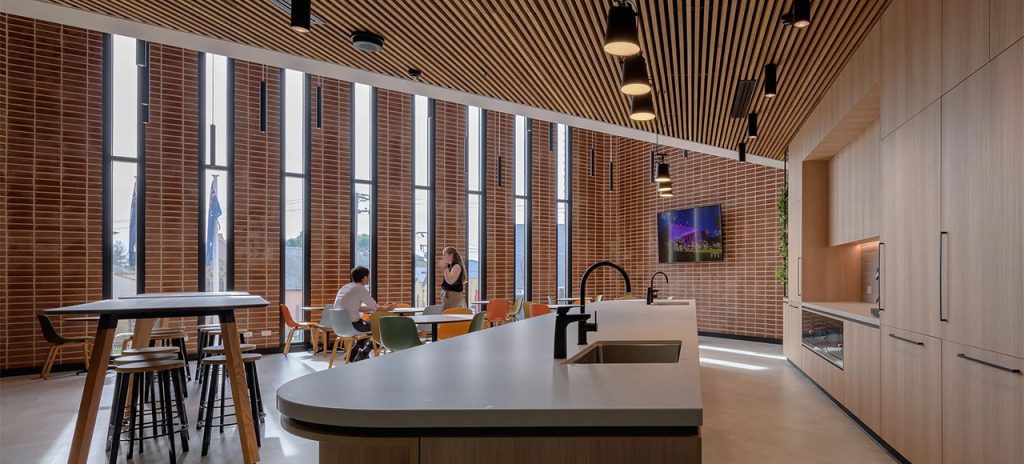
When only Group 2 or Group 3 rating is needed, an alternative option is Enviro Clear Coating, a smooth film-forming coating. This coating delivers a furniture-grade finish for internal timber installations. Easy to clean and available in different gloss levels and stains, Enviro Clear provides a durable and aesthetically pleasing solution for high-traffic areas.
Durable without compromising on style
Hardwoods
Hardwoods are notably durable due to their dense structure, slow growth rate, and complex cellular composition. Their high density and interlocking grain pattern provide resistance to wear and impact. Natural extractives like tannins and oils act as preservatives against decay and pests.
Additionally, hardwoods’ resilience to environmental factors, such as moisture and temperature fluctuations, contributes to their longevity. With these qualities, hardwood timbers offer exceptional durability. You can browse the hardwood species that we offer at Mortlock here.
Thermally modified timber
The softwood species that are part of are range, are thermally modified. This means they have been treated with high heat and steam to make the timber hydrophobic and essentially cook the organic compounds out of the timber. This makes them extremely durable.
Thermally modified timber offers numerous benefits, including enhanced resilience and stability. The process removes moisture, reducing the risk of warping, cupping, and decay. With less moisture, the timber becomes less hospitable to fungi and insects, prolonging its lifespan. Additionally, thermally modified timber boasts distinctive aesthetics, with colour and texture changes that result from the modification process.
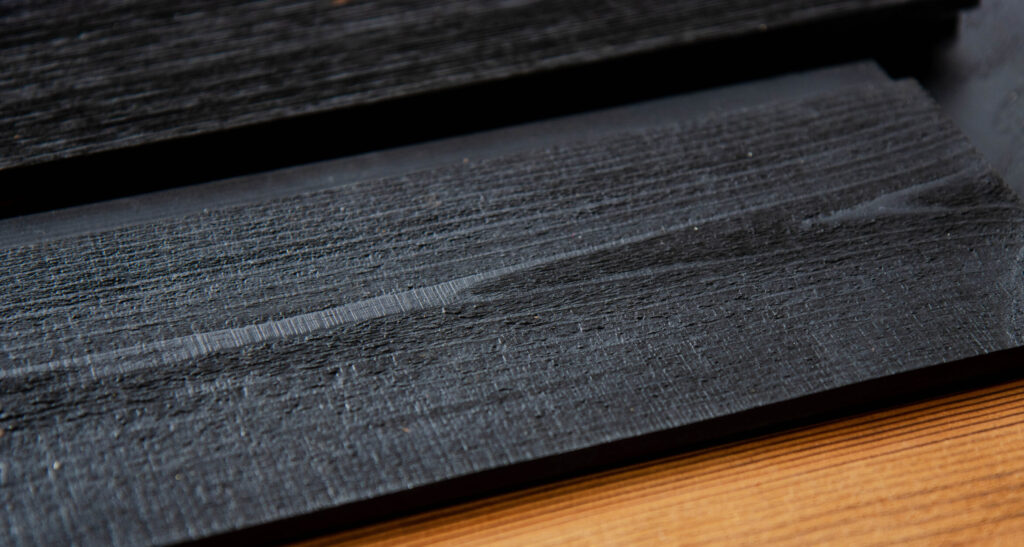
This thermally-modified timber has a softer experience, leading to its specification at Brightwater Care Group’s new world class campus in Piara Waters, WA. The natural and essentially ‘cooked’ timber of Vacoa, was used in Mortlock’s Trendplank cladding profile. This profile allows for natural timber movement but as thermally-modified timber is very stable, the timber cladding, pre-finished before delivery, will hold up considerably.
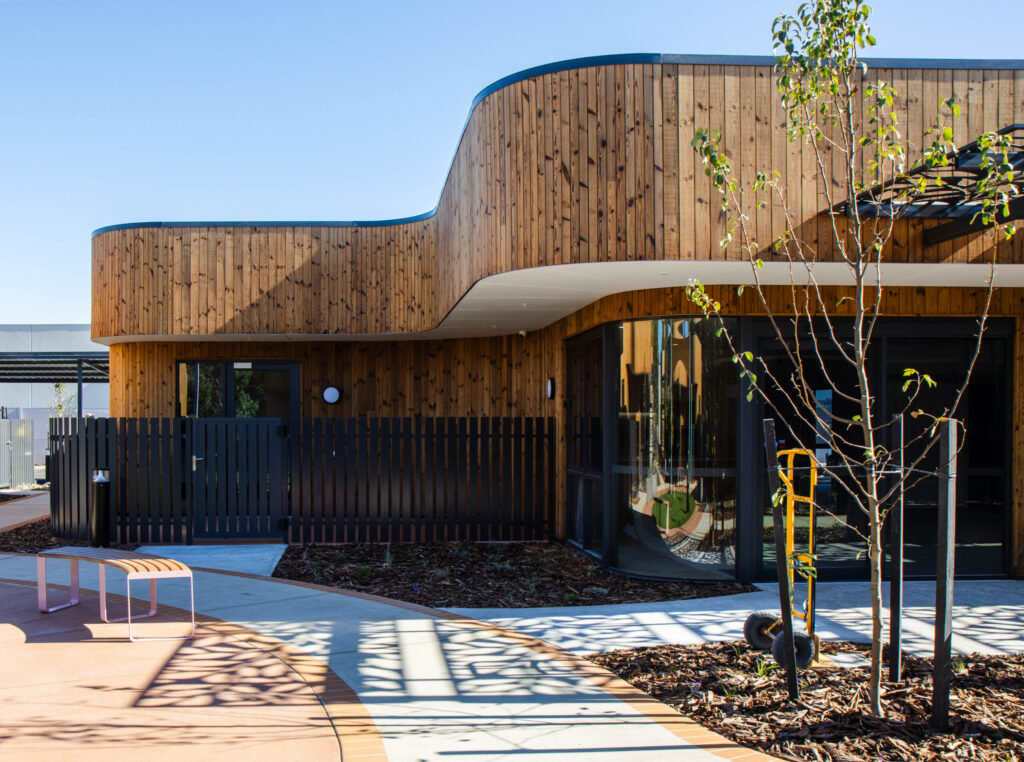
3. Healthier living and working environments
Timber goes beyond sustainability. It can help create spaces that promote well-being, improved air quality and emulate the outdoor environments we long to always be a part of. Architects can look to subconsciously link nature and biophilic considerations for the comfort of those living or working in such designs.
Research shows that timber-built environments offer numerous physiological and psychological benefits, including improved air quality, lower stress levels, and enhanced emotional states.
This is maximised when the incorporated timber is used for about half of the surface area and the natural patterns, grain and knots of the timber are on full display. This prompts a strong biophilic response, especially when natural timber is incorporated into spaces through ceiling, walls and smaller elements such as doors and railings.
The desired aesthetic and benefits of timber in architecture are proven to positively influence us. The study, Kotradyova V, Vavrinsky E, Kalinakova B, et al. Wood and Its Impact on Humans and Environment Quality in Health Care Facilities. Int J Environ Res Public Health. 2019, discusses how wood influences the sensomotoric cortex, which is responsible for analytic thinking and logic. The study sought to discover how natural materials, particularly wood, are used in buildings.
The study found that high-stress environments can greatly benefit from humanized interiors as wood can reduce patient recovery time and alleviate stress. The research supported the use of natural wood in hospitals, showing it enhances well-being and is suitable for healthcare and social facilities with proper zoning and cleaning.
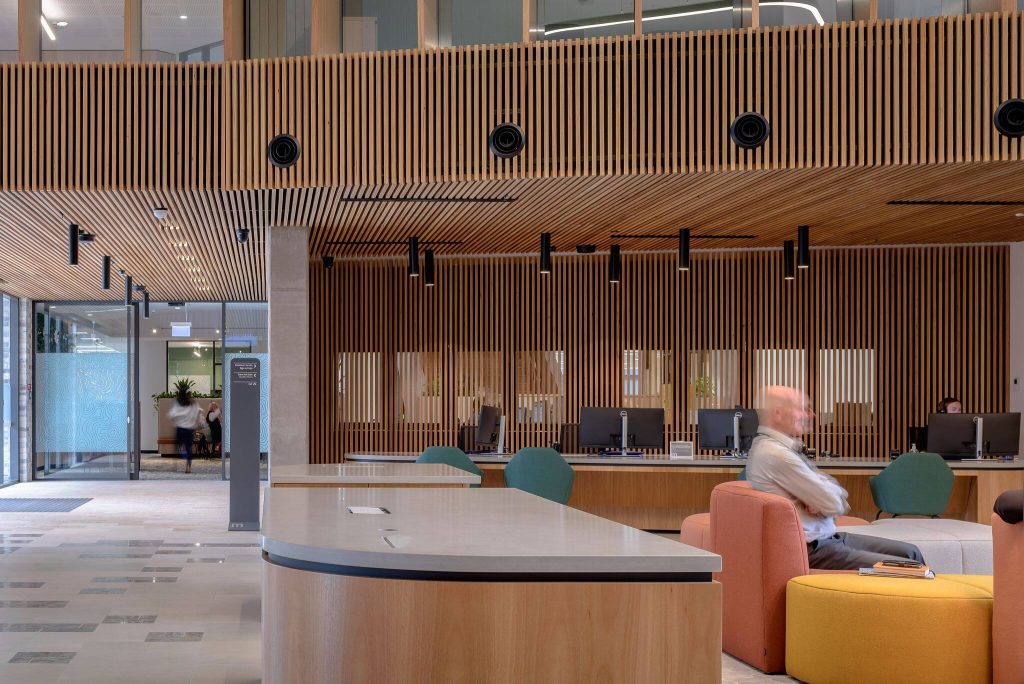
As people spend more than 80% of their time inside buildings, we look to champion the use of timber in design. Imagine if buildings had labels listing their “ingredients”. Designs that incorporated materials such as aluminium or plastic, could resemble “junk food,” filled with chemicals and toxins.
By carefully selecting natural materials like timber and their low VOC coatings, we can create healthier environments.
4. Biophilic Design and Natural Timber
Biophilic design originated from American biologist Edward Wilson’s 1984 proposal that humans have an innate need to connect with nature, which requires radical reform in modern society. This idea influenced various research fields, including architecture, leading to the development of biophilic design.
Biophilic design and natural timber
Based on this theory, our connection to nature can be enhanced through the use of natural materials such as stone, timber and plants. But also through design principles that incorporate the use of space, lighting, airflow and the surrounding landscape.
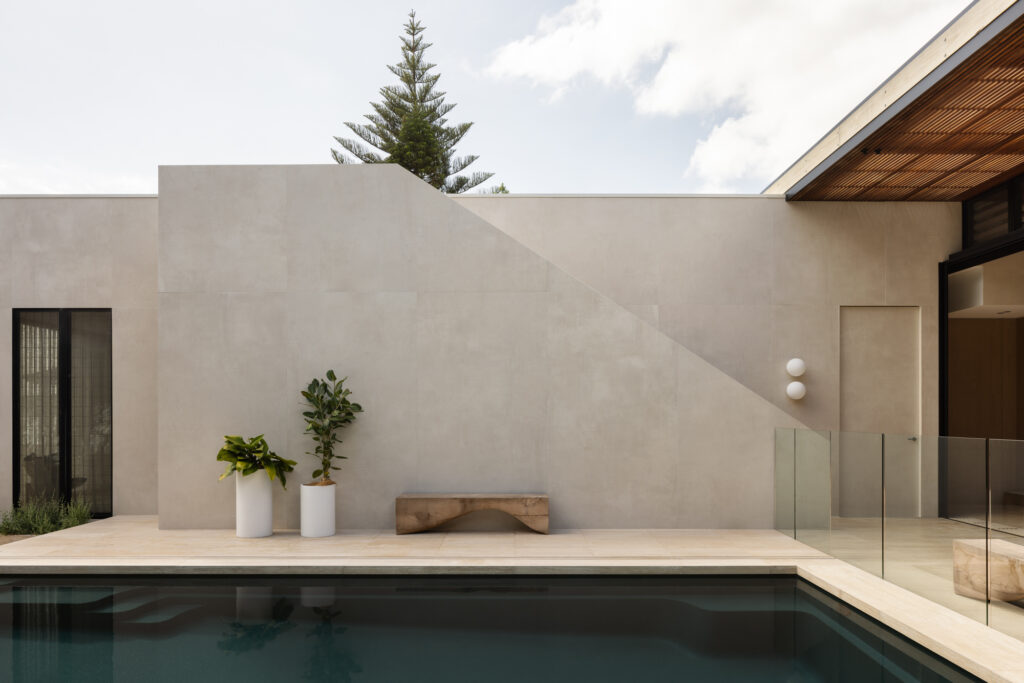
Julieta Loya, regional sustainability consultant at Woods Bagot stated that “Biophilic design is a sensorial experience, thinking about what a place feels like, smells like, looks like and how people experience that.
Biophilic design as above continues to have numerous benefits to an individual such as reducing stress, alleviating anxiety and improving cognitive function. Many designs across Australia have followed biophilic principles, such as using natural shapes and forms for spaces of refuge and finding ways to integrate light into cultural spaces.
5. Natural aesthetics in a built environment
Aesthetics play a crucial role in construction, significantly enhancing a building’s surroundings and positively impacting the well-being of its inhabitants. Buildings designed with aesthetics in mind are more likely to attract people and foster a sense of community, with the use of colour, shape, and texture making them stand out and become landmarks. The importance of community in architectural design cannot be overstated, as aesthetically pleasing buildings encourage social interaction, create shared spaces, and instil a sense of pride and belonging among residents.
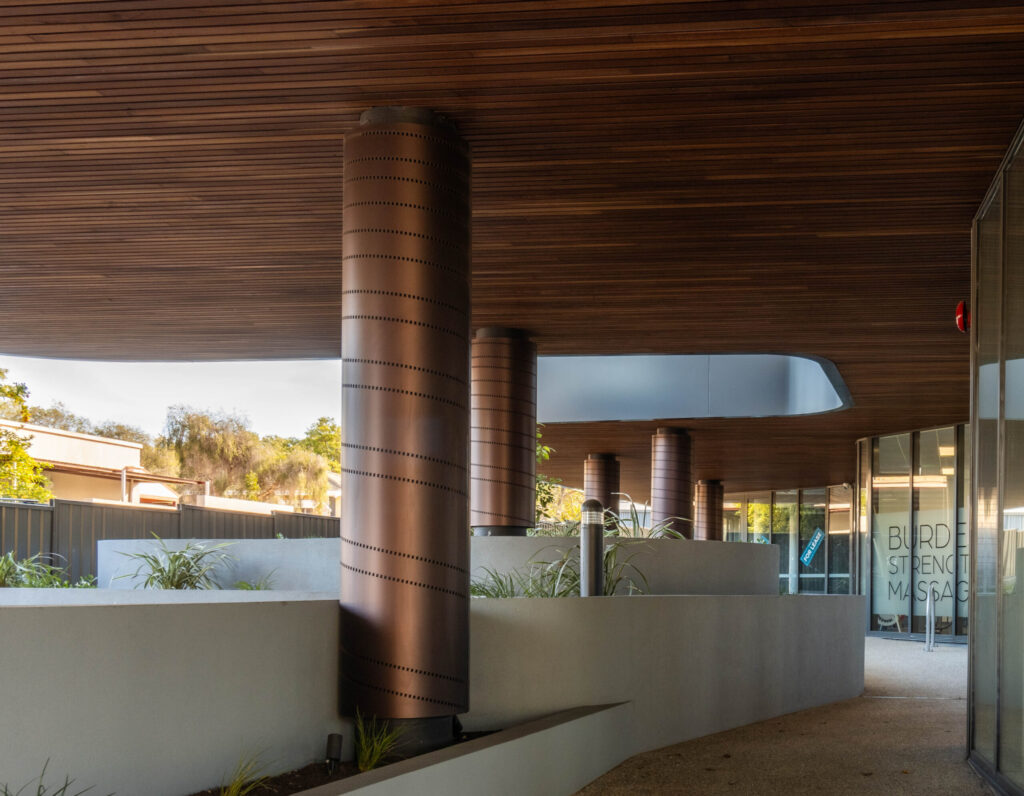
Natural timber exemplifies this principle by providing a unique and warm aesthetic that is difficult to replicate with other materials. Its natural grain, colour variations, and textures add character and beauty to any structure, creating an inviting and comfortable atmosphere. Each piece of timber has its own distinct pattern and hue, ensuring that no two pieces are exactly alike, which lends a sense of individuality and authenticity to a building. Timber’s versatility means it can be seamlessly integrated into a wide array of architectural styles, from rustic and traditional to sleek and contemporary.
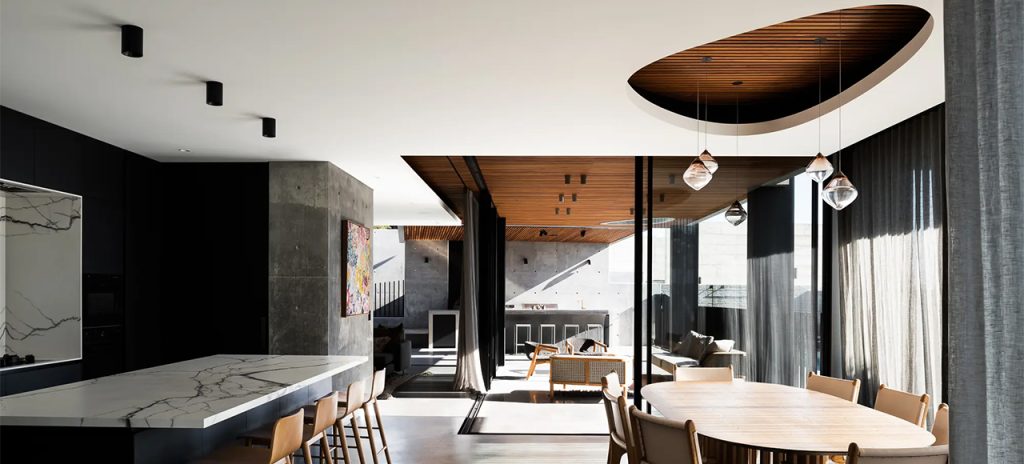
In rustic and traditional designs, timber enhances the charm and coziness of a space, evoking a sense of nostalgia and connection to nature. In modern and contemporary architecture, natural timber in different profiles can provide a striking contrast to clean lines and minimalist designs, adding warmth and a touch of organic beauty to otherwise stark environments. Additionally, the tactile quality of timber, with its smooth yet textured surfaces, appeals to the senses, making spaces feel more human and connected. This sensory appeal is crucial in creating environments where people feel comfortable and engaged, thereby promoting community interaction.
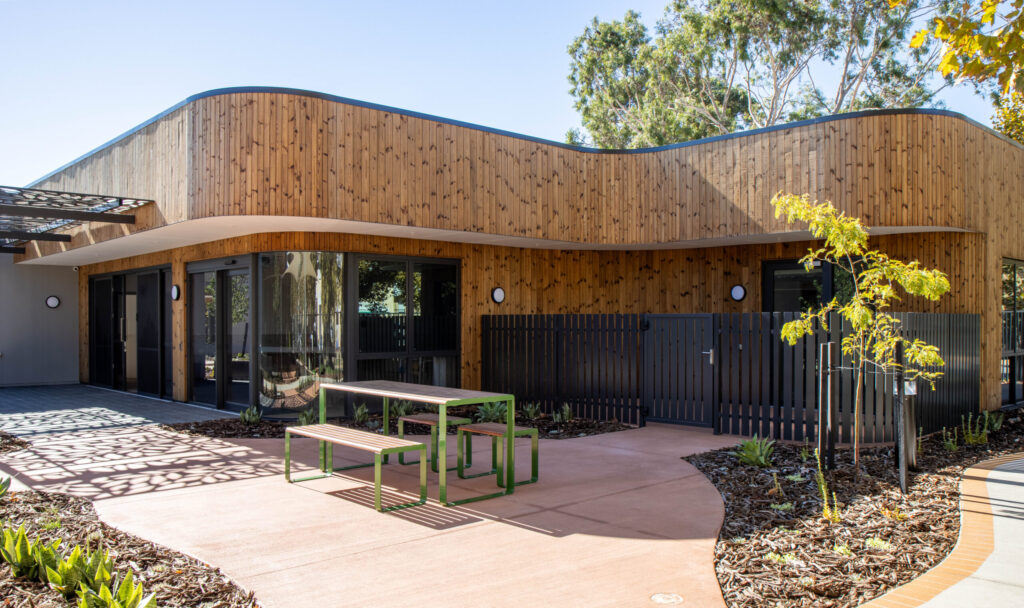
Whether used for structural elements, interior finishes, or decorative accents, natural timber contributes significantly to the overall aesthetic appeal and ambiance of architectural designs. By integrating aesthetic principles and focusing on community-oriented spaces, architects and builders can create environments that not only look beautiful but also enhance the quality of life for all who use them, fostering stronger, more connected communities.
YOUR VISION, OUR EXPERTISE.
We feel that natural timber is not just a building material; it’s a testament to sustainable living, innovative design, and holistic well-being. By embracing timber in architectural design, you’re not just constructing buildings; you’re shaping a better, greener future for us all.
Finding the perfect timber coating for your project involves striking a balance between functionality and visual appeal. We encourage you to consult with our experienced team to ensure that your project stands the test of time.
To discuss your project, see pricing and receive samples, get in touch with us today! Call 1800 870 452 or request a quote.
View our pricing and product guide
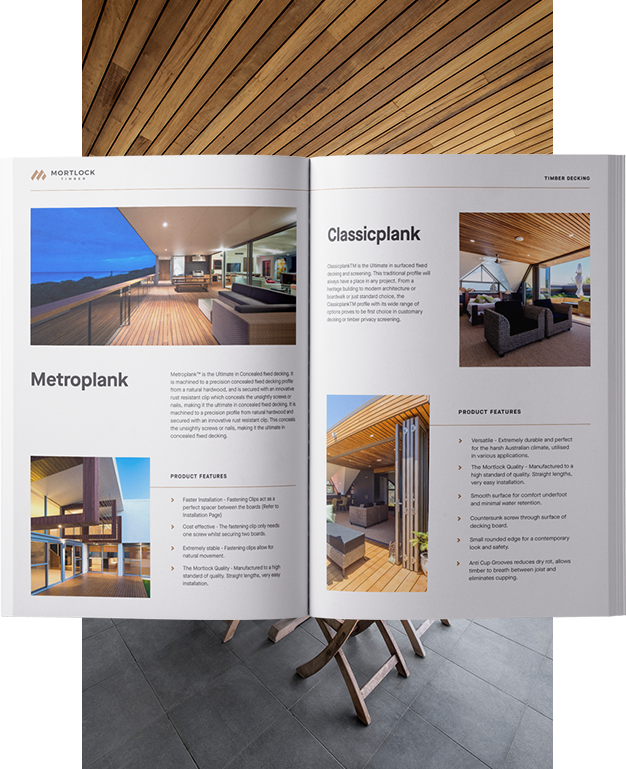
We are committed to bringing you timber products that add value and endure for years to come, even in heavy traffic and harsh weather conditions. We understand the value of efficiency when it comes to installation and keeping hardwood timber costs down. That’s why we’ve spent decades perfecting our designs to make them easier to handle, less wasteful and more efficient to install. This efficiency allows us to offer you premier products that are more cost-effective so that you can experience greater savings on timber wall costs, timber ceiling costs, timber cladding costs and timber decking costs.
Download our Pricing and Product Guide for our complete hardwood timber price list including timber decking prices, timber wall prices, timber ceiling prices and timber cladding prices.
